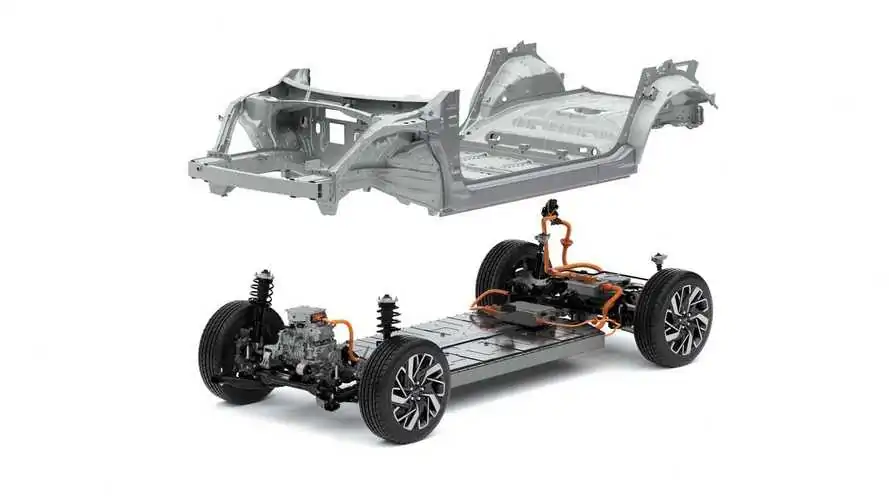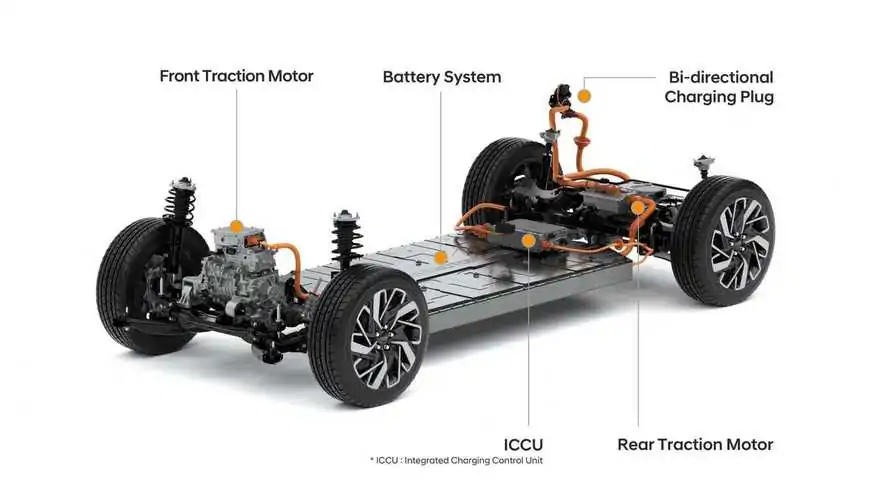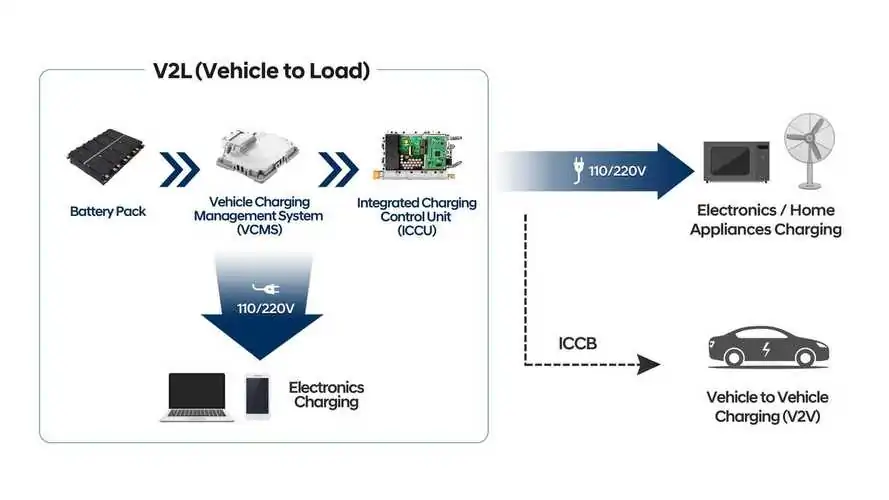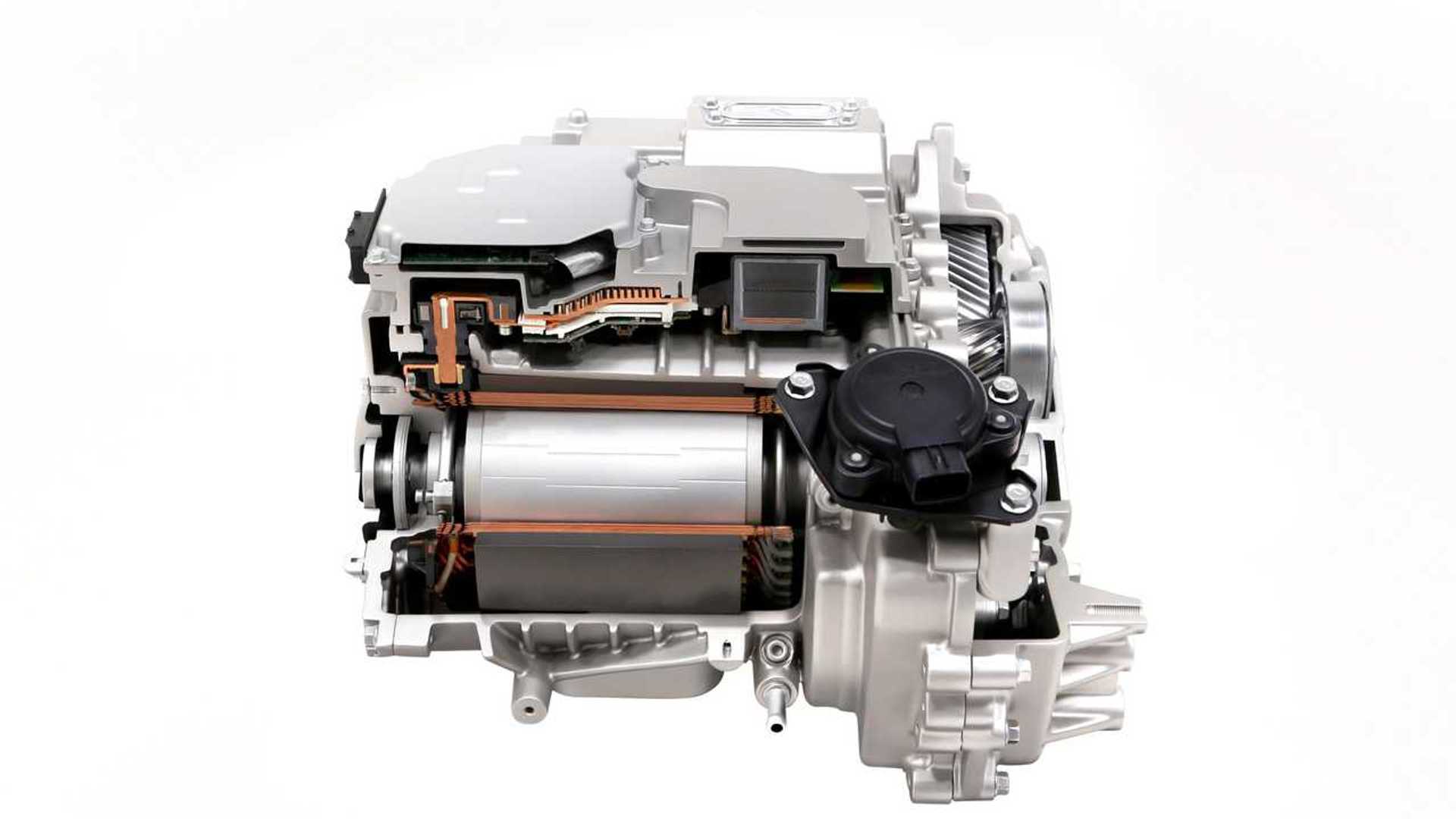The modular architecture will also be available under the Genesis EVs and Kia.
Hyundai Motor Group will have 23 all-electric vehicles by 2025. Some of these vehicles will be built on an EV chassis. The automaker unveiled the E-GMP modular platform today. The E–GMP architecture can be reconfigured to fit subcompact, compact and mid-sized cars and SUVs. It also allows performance-oriented electric vehicles to reach 60 mph in just 3.5 seconds.
The 2022 Hyundai Iniq 5 will be the first vehicle to feature the E-GMP platform. It is also the first dedicated vehicle under the company’s EV sub-brand. According to company representatives, the new architecture will be used for a Kia model with a completely new design and an “exciting powertrain”. E-GMP will also be available to the Genesis luxury-oriented division. This brand’s first-ever EV product will compete with the BMWiX, Model S, and the Audi E-Tron Sportback. Although the total battery power is not yet confirmed, Hyundai promised 600 horsepower (or 447 kilowatts) using its E-GMP platform.

Flexibility
A modular battery system will help the E-GMP platform reach its seemingly unrelated goals of high performance, efficiency, and speed. It has individual cells that are embedded into the platform’s base. These can be extended in length and wheelbase to accommodate different vehicle sizes and shapes. These batteries will power a standard rear electric engine, and certain models will include a front motor that allows for all-wheel drive.
The Hyundai platform is space efficient, just like other EVs. For space savings and lower center of gravity, the compact propulsion unit combines an electric motor, transmission and power inverter in one package. The platform does not have a driveshaft connecting the rear and front motors. This allows for more space for passengers and more flexibility in seating arrangements. Hyundai engineers were also able to move the heating and air conditioning elements forward without a bulky internal-combustion motor taking up space. This further improves cabin space.

The E-GMP platform can be used in a variety of vehicles due to its flexibility. It will be available in B-, C, and D-segment vehicles, according to company executives. A larger SUV similar to the Kia Telluride or Hyundai Palisade in size is possible in the future. The architecture is rear-wheel drive by default, which makes it an ideal fit for premium vehicles.
Charge me up
Hyundai Motor Group put a lot of effort into making the E-GMP platform future-proof. It can charge at 240-volts, 400-volts, and 800-volt high-speed charging. For overnight home charging, the first option will be most practical. 400-volt stations are very popular in public areas. While 800-volt chargers are not common, they should be more frequent. This will allow vehicles that use the E-GMP platform to charge much faster, and while they may be rare, 800-volt chargers should become more popular. These chargers can charge 80 percent in 18 minutes, and provide 62 miles of range in 5 minutes. Hyundai claims that they are capable of delivering an average 80 percent charge in as little as 20 minutes.
A unique dual-path charging system improves efficiency by routing 240-volt power directly to the battery while 400- or 800-volt power passes through an inverter before reaching the battery. They also have a separate cooling system, which improves both safety and thermal management.

Safe And Sound
Engineers at Hyundai Motor Group were concerned about passenger safety as with any modern vehicle. The E-GMP platform features a number of passive safety measures. These include a front crumple structure and cross-car bracing. This helps to distribute collision forces over a wider surface, and improves crash performance in small- and moderate-offset collisions. The platform’s under-car battery array is supported by a hot-stamped steel structure with aluminum side beams.
This design reduces the risk of battery damage by spreading the impact of the collision over a larger area, which in turn helps to minimize intrusion into the passenger compartment and decreases the likelihood of a dangerous battery rupture. It is almost certain that the vehicle on the platform will have active safety features such as automatic emergency brake and lane departure prevention. Although autonomous driving is not yet confirmed, it is possible that autonomous driving will be in the future. Hyundai has partnered with Motional Robotaxi to study autonomy.
Final Destination
Although specific details regarding the future of Genesis EV, Hyundai, Kia and Kia are not yet confirmed, it is likely that each brand will offer at most two to three EV models by end of this decade. The dedicated E-GMP platform forms part of that plan. It is unlikely that we will see large fleets of Hyundai Motor Group electric vehicles on the roads anytime soon. The company is taking a careful, reliability-focused approach in production.
Fayez Abdul Rahman (senior vice president, Vehicle Architecture Development Center), stated that “we are expecting high demand when our first vehicle is on the market”, but quality has the highest priority at Hyundai Motor Group. Rahman said that while some customers may have to wait, the company won’t compromise on quality in order to produce high numbers.
The Ioniq 5 will arrive next year, and the unnamed Kia EV one year later. However, it could be 2022 or even 2023 before they are widely available at local dealers. The E-GMP platform is promising, and the company’s quality-focused strategy will serve it well over the long-term.
